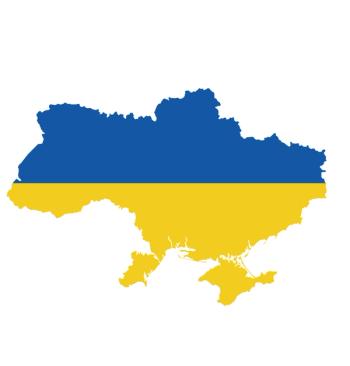
Identifying and Addressing Sleep-Wake Disturbances Post-TBI
Sleep disturbances can exacerbate TBI symptoms. Here’s how to address them.
SWDs Post-TBI
TBIs are highly variable, as are the SWDs that accompany them. SWDs are generally multiple and multifaceted, impacting both objective sleep characteristics as well as subjective sleep quality. Common sleep-related complaints post-TBI consist of
Factors Influencing SWDs
Disturbances in sleep may be a primary result of damage to the sleep-wake circuitry of the brain or a secondary consequence of TBI-related comorbidities, including depression, pain, and anxiety, as well as pharmacological treatments.13 Patients with TBI self-report high levels of depression and anxiety, as well as poor sleep quality.7,9,13 Increased levels of depression and anxiety are likely to contribute to SWDs after an injury, as similar subjective and objective sleep disturbances are also common in patients with depression and no reported history of
As mentioned previously, SWDs may appear at any point in the recovery continuum; thus, it is important to monitor for sleep disturbances across time. For example, fatigue and posttraumatic hypersomnia have been observed up to 3 years post trauma.16 Though SWDs have been identified in a wide range of injury severities, some studies have identified a worsening of sleep-related complaints, as well as an increase in sleep-time requirements with more severe injuries.20 Additionally, normal aging is associated with an increase in SWDs in the general population.21 Given the effects of age on sleep, it is likely that aging will exacerbate TBI-associated SWDs. Other important considerations are body mass index (BMI) and the patient’s sex. These variables can provide valuable information on the likelihood of SWDs, particularly sleep apnea, as increased BMI and the male sex have shown a positive correlation with the presence of sleep apnea, though this may be underdiagnosed in women due to differing symptoms.22-24
Outcome Impact
Disruptions in the normal sleep-wake cycle are likely to have a negative impact on the rehabilitative process. In general, patients with TBI show deficits in executive functions, including attention, verbal fluency, planning skills, etc. These deficits may be further impacted by SWDs and depression.25-28 In fact, deficits across a wide array of cognitive areas have been reported to be greater in patients with TBI and concurrent
Sleep is also known to contribute to emotional and psychological well-being. For example, excessive daytime sleepiness, as a consequence of apnea, has been found to impact mood and judgment.30 Likewise, trauma-induced SWDs have been shown to increase negative behavior and increase the likelihood of patients staying in bed during sessions.12 In addition to deficits in rehabilitation performance and cognition, SWDs have been linked to longer rehabilitative stays.36 Overall, disturbances in sleep will ultimately influence the ability of patients to reach their full rehabilitative outcome potential.
Assessment and Treatment of SWDs
Considering the potential consequences of SWDs and the correlation with brain injury, care should be taken to properly screen, diagnose, and treat these disturbances in an attempt to improve patient outcomes.37 Screening may include a combination of clinical interviews, sleep diaries, and self-reported questionnaires. During a clinical interview, baseline information is gathered to assess potential changes in sleep patterns and factors that may be influencing sleep (comorbid factors such as
Sleep diaries may be a useful self-monitoring tool for documenting the nature, frequency, and severity of any disturbances in sleep. Several subjective questionnaires may also be administered, including the commonly used Epworth Sleepiness Scale and the Pittsburgh Sleep Quality Index.38 Objective measures of SWDs, specifically full, overnight PSGs, should be used whenever possible, as it gives the most accurate representation of brain, muscle, and respiratory activity. Actigraphy may be used as a more feasible measure, as it is inexpensive, easy to use, and allows for multi-night monitoring; however, the data is limited, and the reliability and accuracy has not yet been fully validated in regards to
Once any SWDs are identified, treatment depends largely on the type of disturbance. By utilizing a combination of the aforementioned screening/diagnostic techniques, one may better identify the root-cause of the disturbance, thereby allowing for more appropriate treatment. Treatment for sleep apnea primarily includes the use of continuous positive airway pressure (CPAP) or bi-level positive airway pressure machines, which treat apnea by increasing air pressure in the throat to keep the airway from collapsing while a person sleeps. Prescription medication may also be used; for example, dopamine agonists to treat restless leg syndrome or periodic limb movement disorder; benzodiazepines, anticonvulsants, or orexin receptor antagonists for insomnia; stimulants for hypersomnia, etc.
Ideally, medications should be used short-term and paired with good sleep hygiene and other behavioral treatments (ie, relaxation training, cognitive therapy, etc). Other interventions that may be utilized include forms of light therapy and counseling. Exposure to red light and near infrared light may improve sleep for patients with TBI, as this type of light therapy has been shown to reduce sleepiness and improve mood in healthy adults.40-42 Counseling will also provide a beneficial support system for patients with TBI who are experiencing disruptions in sleep, especially if depression/anxiety are thought to be the basis of the SWDs.
Proper treatment often requires a mixture of treatment paradigms. Regardless of the type of intervention, feasibility may be limited when dealing with the brain-injured population, largely due to issues of tolerance and adherence to treatment. Adherence to CPAP use, medications, and light therapy should be closely monitored.
Dr Howell is a senior neuroscientist at the Centre for Neuro Skills. She is a specialist in brain injury rehabilitation, neurodegenerative disease, and clinical research.
References
1. Traumatic brain injury & concussion. Centers for Disease Control and Prevention. December 15, 2022. Accessed February 23, 2023.
2. Wickwire EM, Williams SG, Roth T, et al.
3. Alhola P, Polo-Kantola P.
4. Irwin MR.
5. Thompson KI, Chau M, Lorenzetti MS, et al.
6. Mathias JL, Alvaro PK.
7. Shekleton JA, Parcell DL, Redman JR, et al.
8. Modarres MH, Kuzma NN, Kretzmer T, et al.
9. Parcell DL, Ponsford JL, Rajaratnam SMW, Redman JR.
10. Parcell DL, Ponsford JL, Redman JR, Rajaratnam SMW.
11. Wolfe LF, Sahni AS, Attarian H.
12. Gardani M, Morfiri E, Thomson A, et al.
13. Ouellet MC, Beaulieu-Bonneau S, Morin CM.
14. Baumann CR, Werth E, Stocker R, et al.
15. Verma A, Anand V, Verma NP.
16. Kempf J, Werth E, Kaiser PR, et al.
17. Imbach LL, Bucjele F, Valko PO, et al.
18. Chen PY, Tsai PS, Chen NH, et al.
19. Rotenberg VS, Indursky P, Kayumov L, et al.
20. Ponsford JL, Parcell DL, Sinclair KL, et al.
21. Ancoli-Israel S, Alessi C.
22. Young T, Peppard PE, Taheri S.
23. Redline S, Kump K, Tishler PV, et al.
24. Jordan AS, McEvoy D.
25. Jones K, Harrison Y.
26. Cicerone K, Levin H, Malec J, et al.
27. Bloomfield IL, Espie CA.
28. Sinclair KL, Ponsford JL, Rajaratnam SMW, Anderson C.
29. Mahmood O, Rapport LJ, Hanks RA, Fichtenberg NL.
30. Wilde MC, Castriotta RJ, Lai JM, et al.
31. Diekelmann S, Born J.
32. Walker MP, Brakefield T, Morgan A, et al.
33. Walker MP, Stickgold R, Alsop D, et al.
34. Marshall L, Born J.
35. Sonni A, Spencer RMC.
36. Makley MJ, English JB, Drubach DA, et al.
37. Wiseman-Hakes C, Murray B, Moineddin R, et al.
38. Johns MW.
39. Kamper JE, Garofano J, Schwartz DJ, et al.
40. Ponsford JL, Ziino C, Parcell DL, et al.
41. Naeser MA, Saltmarche A, Krengel MH, et al.
42. Morries LD, Cassano P, Henderson TA.
Newsletter
Receive trusted psychiatric news, expert analysis, and clinical insights — subscribe today to support your practice and your patients.













